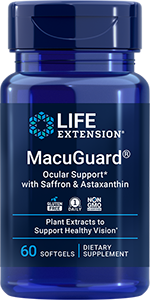
Newsletter
Newsletter
Green tea may help protect against sunburn

A systematic review and meta-analysis published in a recent issue of Molecules found an association between oral intake or topical application of green tea catechins and a reduction in ultraviolet (UV) radiation-induced sunburn, which is an inflammatory reaction of the skin to UV exposure, clinically known as erythema.*
Catechins are a type of flavonoid that occur in plants such as Camellia sinensis (tea). Green tea catechins include (-)-epigallocatechin-3-gallate (EGCG), well known for its anti-cancer and health-promoting effects, (-)-epicatechin, and many other similar molecules. These compounds have been recognized as having anti-inflammatory, antioxidant and photo-protective properties.
“To our knowledge, this is the first meta-analysis to assess the effectiveness of green tea catechins specifically on measures of ultraviolet radiation-induced erythema and related pro-inflammatory mediators,” authors Mahendra P. Kapoor and colleagues wrote. “Regular intake of as low as 540 mg of green tea catechins per day could be beneficial for the protection against ultraviolet radiation-induced erythema, wherein green tea catechin metabolites are bioavailable at the dermis and epidermis levels of the skin, and thus increase the minimal dose of radiation (MED) required to induce erythema.”
Dr Kapoor added that the study “suggests that green tea catechins can strengthen the skin’s tolerance to ultraviolet radiation-induced skin damage from radiation through the prevention of the ultraviolet radiation-induced perturbation of epidermal barrier functions.”
Study details: 12 weeks of green tea intake yields benefits
The meta-analysis included three randomized, double-blind, placebo-controlled trials and one non-double-blind, non-placebo-controlled study that examined potential protective effects of orally administered capsules containing green tea catechins against sunburn (clinically known as erythema) induced by solar-simulated UV radiation. Two additional studies that involved a single dose of topically administered catechins were separately analyzed.
Pooled analysis of data from three studies that evaluated erythema in skin exposed to UV radiation before and after 12 or more weeks of green tea catechin intake revealed a favorable effect in association with catechin intake. Both low and high doses of the green tea capsules were effective at decreasing low-dose UV radiation-induced erythema. It was also noted that a significant favorable effect was seen in the one study which assessed UV radiation-induced erythema after green tea intake for only six weeks, but as none of the other studies assessed this shorter duration of intake, further analysis was not performed.
When green tea catechins’ effects compared to a placebo were analyzed, pooling the data of two placebo-controlled trials confirmed their effectiveness against low-intensity UV radiation-induced erythema.
Pooling data from participants in the studies involving topical green tea catechins revealed significant benefit for green tea at higher UV radiation doses.
*Kapoor MP et al. Molecules. 2021 Jun 17;26(12):3702.
Products
Apply What You've Learned: Sun protection
- Sunlight is essential to life on earth. In humans, sunlight regulates circadian rhythms, boosts mood and stimulates the production of vitamin D in skin that is exposed to it. However, prolonged exposure of the skin to the sun’s rays can be damaging.
- In addition to the visible spectrum of light, sunlight includes infrared and ultraviolet (UV) light. The latter consists of UVA, UVB and UVC rays. UVA and UVB rays can both cause sunburn and skin damage.1 Look for broad-spectrum sunscreens that protect against both types of UV.
- Wearing hats, sunglasses, long-sleeved shirts and long pants (as opposed to shorts) is another way to protect against UV radiation. Avoiding prolonged unprotected sun exposure between the hours of 10 AM to 4 PM, when the sun’s rays are strongest, can also help.2
- Because UV rays can cause skin cancer, the American Academy of Dermatology advises against obtaining your vitamin D requirement from sun exposure or tanning beds.3 Intake of with vitamin D is an easy way to maintain healthy vitamin D levels. A simple blood test can inform you whether your vitamin D levels are within an optimal range and help guide dosage.
Reference
- “UV radiation & Your skin.” Skin Cancer Foundation. Last reviewed: June 2019. https://www.skincancer.org/risk-factors/uv-radiation/
- “Spend time outside and stay sun-safe.” American Cancer Society®. https://www.cancer.org/latest-news/stay-sun-safe-this-summer.html 2020 Apr 15.
- Vitamin D Stats and Facts.” Vitamin D. American Academy of Dermatology Association. 2021. https://www.aad.org/media/stats-vitamin-d
Featured Life Extension Magazine® Article
Topical CoQ10 for Younger-Looking Skin, by Robert Goldfaden and Gary Goldfaden, MD
Nutrition-conscious individuals have long been familiar with the benefits associated with coenzyme Q10 (CoQ10) supplementation. Less well known are the positive skin effects associated with topical application of this vital coenzyme.
Oxidative stress is a major cause of damaged skin. Depletion of the skin’s antioxidant reservoir caused by aging and sun exposure leads to an increase in oxidative stress that promotes inflammation, DNA mutations and other undesirable effects.
In one experiment, pretreatment of skin cells with CoQ10 was shown to reduce DNA damage by up to 70% and prolong cell survival. Other research in skin cells has shown that CoQ10 increases energy metabolism.
What's Hot
Health Concern
Pomegranate extract, juice may help protect skin
A randomized trial reported on October 10, 2019 in Scientific Reports revealed an association between drinking pomegranate juice or consuming pomegranate extract and protection against ultraviolet-B radiation (UVB), the type of UV radiation responsible for sunburn and related skin damage.
Skin Cancer
Skin cancer is the most common form of cancer, affecting over 3.5 million people in the United States.
Related Life Extension Magazine® Articles

Prevent Sun Damage From the Inside Out
An oral fern extract with other nutrients decrease UV-radiation-induced DNA mutations by 84%.

Brain-Protective Effects of Green Tea
Green tea polyphenols promote the formation of new brain cells and the ability of brain cells to create neural connections. In people who regularly drank green tea, cognitive disorders were found to be 35% lower.
Life Extension Magazine® Issue Now Online
In a clinical trial, scientists identified two plant extracts that increased hair growth for 95% of men with male pattern baldness.
Free eBooks
Life Extension’s eBooks are educational guides to a variety of health topics, including blood sugar management, digestion, immune health and probiotics. Find out about the latest scientific research on nutrition, vitamins and other supplements and common health challenges – all easy to access on your phone, tablet or laptop.





